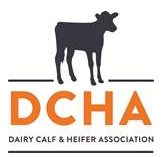
 It's customary to feed growing heifers high levels of forages and byproduct feeds because these feedstuffs provide an inexpensive source of energy and protein. However, growing heifers digest grains more efficiently than forages. Some of the latest research on feeding replacement heifers looks at incorporating more grain than hay into the diets of young heifers and how this impacts weight gain and feed efficiency.
It's customary to feed growing heifers high levels of forages and byproduct feeds because these feedstuffs provide an inexpensive source of energy and protein. However, growing heifers digest grains more efficiently than forages. Some of the latest research on feeding replacement heifers looks at incorporating more grain than hay into the diets of young heifers and how this impacts weight gain and feed efficiency.One of those studies, conducted at Purdue University in the summer of 2012, evaluated the effects of increasing grain inclusion in growing-heifer diets. Diets used in the study contained 80 percent, 60 percent and 40 percent grain and were formulated to be 18.5 percent crude protein and 37.5 percent NDF (neutral detergent fiber) across treatments. The treatment diets were fed for 56 days. Following this, all heifers were rapidly switched to a common diet containing 40 percent grain and 60 percent hay fed for an additional 56 days, says Tana Dennis, a Purdue University animal sciences graduate student who reported the research findings this summer at the annual meeting of the American Dairy Science Association.
Heifers fed 80 percent grain were 60 pounds heavier at the end of the 8-week treatment period than heifers fed 40 percent grain, which is largely due to increased feed intake by heifers fed 80 percent grain, Dennis says. Feed efficiency also was improved for heifers fed 80 percent grain during the treatment period. However, when heifers were switched to a high-forage diet, those previously fed 60 percent and 40 percent grain had greater average daily gain and feed intake than heifers fed 80 percent grain.
"Interestingly, feeding 60 percent grain compared to 40 percent grain resulted in a feed cost savings of 21 cents per pound of weight gain over the entire study," Dennis says. "Therefore, when feeding growing heifers from 4 to 8 months of age, feeding moderate to high levels of grain improved weight gain, feed efficiency and cost savings when compared to feeding low levels of grain."
Dennis says recent research from Purina Animal Nutrition has shown that replacement heifers 4 to 6 months of age also had greater weight gains and improved rumen development when fed greater amounts of grain instead of hay.
Read an abstract1 of the Purdue research here. Dennis also discusses the research in episode 177, "Grain Inclusion Levels for Dairy Heifers," of the Purdue Dairy Digest podcast series.
9.9.2013